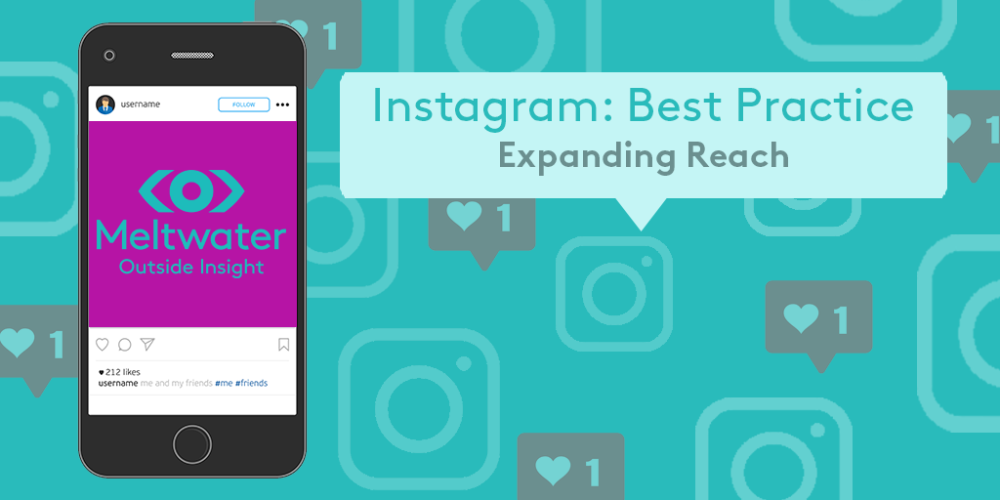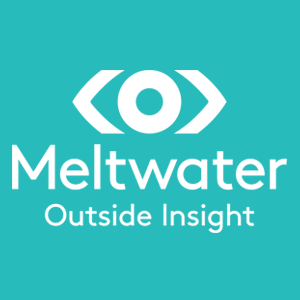Instagram: Expanding Reach & Increasing Engagement
21 Jul 2017

In part 1 of our Instagram best practice blogs, we’ll be looking at how to expand reach and engagement. Keep an eye out for next week’s Instagram blog which will be focusing on the kind of content we should be posting. Many businesses are only just beginning to consider Instagram as a marketing tool.
It was reported at the end of 2015 that Instagram had more monthly users than Twitter. Around 50% of users log in daily and at least 50% of users follow brands. This presents a huge opportunity for businesses to engage with users. We can track Instagram and the impact of utilising it through Meltwater’s media monitoring tool.
Setup your profile properly
Just like all of our social media profiles, we should ensure we use a branded profile image to assist brand recognition and include a short bio that confirms exactly what it is we do. Instagram also allows us to add a link in our bio – this is the only place we can include a link within the platform, so don’t forget to utilise this feature… and wisely.

Fashion Revolutions Instagram profile
Use hashtags to expand your reach
When used well, hashtags can significantly expand the reach of our posts. Don’t just take our word for it, you can measure the ROI of using a hashtag yourself using a media monitoring tool such as Meltwater – hyperlink to our site. Such tools offer a variety of metrics to measure against including hashtag media exposure, the sentiment of engagement, top posters (they could potentially be collaborators of ours?) and more!
Did you know that posts with at least one hashtag receive an average of12.6% more engagement than posts without?
…But use hashtags in moderation
Due to the reach hashtags offer, it can be easy to get carried away and use as many as possible. Be cautious of this, Twitter recommends using up to three hashtags per post and while Instagram users tend to use more, don’t go overboard!
A media monitoring tool can support us when picking the most appropriate hashtags. For example, we can search trending themes within our industry to ensure we’re talking about topics of interest to our community. We can also take a look at the popularity of the hashtag before including it.
Note: Just because a hashtag is trending, this doesn’t mean that we should get involved. Using hashtags such as #likeforlike can look like spam and make us seem unprofessional. Our community should follow us because they see value in our content, not because we’re offering a ‘like back’ as an incentive.
Check out our last blog for more details about using hashtags!
Use geo-locations
Using geo-locations is another way to expand our reach on Instagram. We can post a picture tagging the location where it was taken, or even where an event of ours is going to be held. Much like hashtags, our post will appear when somebody searches for that specific location. People new to an area may use geotagging to discover shops, cafes, events and landmarks. So if we’re at an expo or running an event, tagging our locations can help promote our brand.
We might also be able to discover images that we aren’t tagged in but feature our brand.

When should I post?
Ah, the ultimate question! So generally, posting at lunchtime and evenings (when people aren’t working) is a good way to reach as many people as possible. Sunday evening is commonly thought to be the most effective time to post, as is Wednesday and Thursday evening. We should also consider whether our account is aimed at a national or international audience. If the latter, then think about posting at a time when both timezones are awake.
Use analytics
It’s important to analyse the response of our Instagram posts and social media campaign. Not only does this help to justify our existence in the boardroom, but understanding how well received a campaign has been, helps to build an even more effective strategy. We can use a media monitoring to analyse the impact of our campaigns, benchmarking them against metrics such as potential reach, sentiment.

So that’s it for part one of two. See you next time!

Please login to comment.
Comments